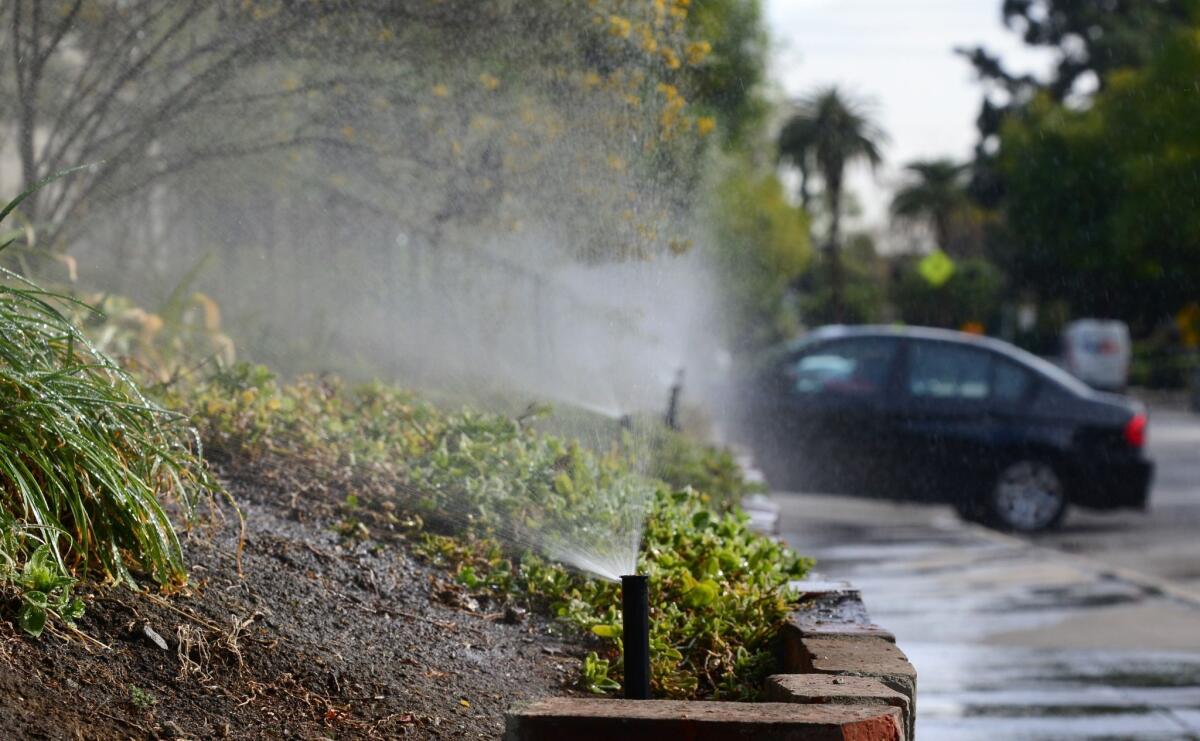Use less water than your neighbors? You get a smiley face

Drought or no drought, utilities across California are campaigning to get homeowners to reduce outdoor water use, which often constitutes at least half of a household’s water consumption.
One of the largest urban retail water agencies in the state is pursuing a new strategy in that effort: “Behavioral water efficiency.”
The East Bay Municipal Utility District, which serves 1.3 million customers in the east San Francisco Bay Area, is expanding a pilot program that provides individual residential customers with water report cards, showing how their use compares with similar-sized households in the area.
“It’s just human nature to not want to be too different from everyone else,” said Mike Hazinski, the agency’s water conservation supervisor. “It turns out that’s very motivating for customers.”
A recent consultants’ evaluation of the pilot project found that households receiving the “home water reports” reduced use by an average of 5% compared to homes that didn’t get an assessment. Customers who got the profiles were also more likely to take advantage of conservation programs such as rebates or water audits.
The reports, delivered by mail or electronically, also include conservation recommendations tailored to the individual customer. The program was developed by WaterSmart Software, a four-year-old California company with offices in San Diego and San Francisco.
The statements include a household’s water use, how it compares with similar homes in the area and a grade of sorts: “Great,” “Good,” or “Take Action,” accompanied by a water drop wearing a smiley, neutral or worried expression.
The approach has been widely used in the energy sector but is only now getting a serious look from water utilities, the consultants said. “The central idea behind social norms marketing is that much of people’s behavior is influenced by their perceptions of what is ‘normal’ or ‘typical,’ ” they wrote in their evaluation.
“If people are shown that their behavior is outside of the norm or that their perception of the norm is incorrect, they will be motivated to change the way they behave so they conform more closely to the norm,” the consultants wrote.
The 5% water savings achieved in the one-year experiment were greater than the East Bay utility expected – and enough to prompt the agency’s board last week to approve a three-year contract with WaterSmart to increase participation to 100,000 homes.
The new contract will cost $740,000, plus agency administration costs. Compared to other conservation measures, such as consumer rebates for high-efficiency appliances, Hazinski said he expected the home evaluations to yield cheaper water savings.
“We think that it’s going to be very cost effective,” he said.
The utility has long included a customer’s daily water use in bills, but staff found that most homeowners can’t accurately estimate their consumption. The reports didn’t change that.
“They grossly underestimate how much water they use,” Hazinski said.
Twitter: @boxall







